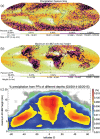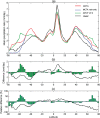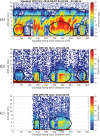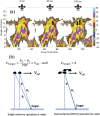Spaceborne Cloud and Precipitation Radars: Status, Challenges, and Ways Forward
- PMID: 32715303
- PMCID: PMC7375167
- DOI: 10.1029/2019RG000686
Spaceborne Cloud and Precipitation Radars: Status, Challenges, and Ways Forward
Abstract
Spaceborne radars offer a unique three-dimensional view of the atmospheric components of the Earth's hydrological cycle. Existing and planned spaceborne radar missions provide cloud and precipitation information over the oceans and land difficult to access in remote areas. A careful look into their measurement capabilities indicates considerable gaps that hinder our ability to detect and probe key cloud and precipitation processes. The international community is currently debating how the next generation of spaceborne radars shall enhance current capabilities and address remaining gaps. Part of the discussion is focused on how to best take advantage of recent advancements in radar and space platform technologies while addressing outstanding limitations. First, the observing capabilities and measurement highlights of existing and planned spaceborne radar missions including TRMM, CloudSat, GPM, RainCube, and EarthCARE are reviewed. Then, the limitations of current spaceborne observing systems, with respect to observations of low-level clouds, midlatitude and high-latitude precipitation, and convective motions, are thoroughly analyzed. Finally, the review proposes potential solutions and future research avenues to be explored. Promising paths forward include collecting observations across a gamut of frequency bands tailored to specific scientific objectives, collecting observations using mixtures of pulse lengths to overcome trade-offs in sensitivity and resolution, and flying constellations of miniaturized radars to capture rapidly evolving weather phenomena. This work aims to increase the awareness about existing limitations and gaps in spaceborne radar measurements and to increase the level of engagement of the international community in the discussions for the next generation of spaceborne radar systems.
Keywords: Doppler; cloud microphysics; convection; precipitation; radar.
©2020. The Authors.
Figures





































References
-
- Ackerman, S. A. , Platnick, S. , Bhartia, P. K. , Duncan, B. , L'Ecuyer, T. , Heidinger, A. , & Smith, N. (2018). Satellites see the world's atmosphere. Meteorological Monographs, 59, 4.1–4.53. 10.1175/AMSMONOGRAPHS-D-18-0009.1 - DOI
-
- Adhikari, N. B. , & Nakamura, K. (2003). Simulation‐based analysis of rainrate estimation errors in dual‐wavelength precipitation radar from space. Radio Science, 38(4), 1066 10.1029/2002RS002775 - DOI
-
- Anderson, E. (2018). Statement of guidance for global numerical weather prediction (NWP). (Tech. Rep.). https://www.wmo.int/pages/prog/www/OSY/GOS-RRR.html:WMO
-
- Atlas, D. (1990). Radar in meteorology: Battan Memorial and 40th Anniversary Radar Meteorology Conference. In American Meteorological Society, Boston, pp. 806.
Publication types
LinkOut - more resources
Full Text Sources
